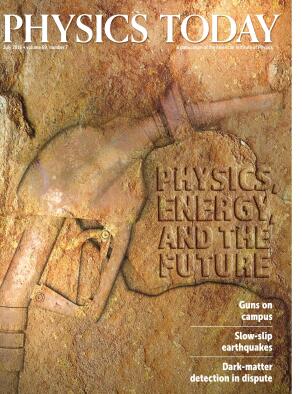The Human Side of Science: Edison and Tesla, Watson and Crick, and Other Personal Stories behind Science’s Big Ideas
DOI: 10.1063/PT.3.3239
The Human Side of Science: Edison and Tesla, Watson and Crick, and Other Personal Stories behind Science’s Big Ideas is an attempt to introduce nonscientists to the world of science. To that end, authors Arthur Wiggins and Charles Wynn Sr must confront one of the most stubborn problems in science outreach: how to make scientific subjects appealing to those whose interests lie elsewhere. There are approximately as many solutions to that problem as there are popular-science authors—restricted vocabulary lists, whimsical framing devices, drawing parallels with art and literature, and many more.

Wiggins and Wynn have chosen an approach they describe as reversing the emphasis of the usual explanatory science book that presents abstract ideas spiced with occasional personal anecdotes. Instead, they promise to put “people first, ideas second.” That choice is not unique to them; indeed, it falls squarely within a broad class of books that anchor explanations of complex topics in stories about the sometimes colorful personalities who made the science.
Some examples of the “people first” approach include David Lindley’s Uncertainty: Einstein, Heisenberg, Bohr, and the Struggle for the Soul of Science (Doubleday, 2007), Louisa Gilder’s The Age of Entanglement: When Quantum Physics Was Reborn (Knopf, 2008), Richard Panek’s The 4 Percent Universe: Dark Matter, Dark Energy, and the Race to Discover the Rest of Reality (Houghton Mifflin Harcourt, 2011), and Janna Levin’s Black Hole Blues and Other Songs from Outer Space (Knopf, 2016), about the LIGO project and its detection of gravitational waves this past September.
What distinguishes The Human Side of Science, then, is less its choice of emphasis than its breadth. Wiggins and Wynn cover around 400 scientists—from Democritus to J. Craig Venter of the Human Genome Project—drawn from more than 2000 years of history; some minichapters at the end briefly mention key researchers of dark energy and the Higgs boson. The authors discuss a range of fields, mostly physics and astronomy, but also geology, biology, and pure mathematics.
That historical and disciplinary breadth is also the book’s greatest weakness. Telling so many stories in such a short space—311 pages, not including the index—necessarily precludes going into much depth with any of them. As advertised, the emphasis is on people first, but the scientific ideas are a very distant second. In many cases, the ideas are sketched so roughly that it’s difficult to say whether a reader who didn’t already have some knowledge of the subject would fully appreciate the scientific accomplishments of the people profiled.
Also, most of the anecdotes in this book are familiar ones: Isaac Newton arguing with Robert Hooke and Gottfried Leibniz, Albert Einstein’s troubled marriage to Mileva Marić and his discussions with Michele Besso and Marcel Grossmann, James Watson and Francis Crick getting their crucial insight from the work of Rosalind Franklin and Raymond Gosling. The stories are told well, even if compactly, but the authors miss clear opportunities to add to or correct existing popular notions. For example, their brief discussion of Galileo Galilei’s work repeats the popular—and, they acknowledge, likely apocryphal—legend of weights dropped from the Tower of Pisa, but they do not describe Galileo’s genuinely innovative experiments that demonstrated the constant acceleration of gravity by rolling objects on ramps. And it is disappointing that a book about the complex human aspects of science feeds the “lone genius” myth by failing to mention Galileo’s contemporaries in physics—especially Simon Stevin, who, in 1586, really did drop objects of different weights from a tower.
Also, the choice to cover a wide range of topics may have been a factor in some minor but distracting oversights and errors slipping through the editing process. For example, some of the photographs and paintings of scientists (not including the many charming Sidney Harris cartoons) are credited only to Wikimedia, even in cases where more detail about their origin is readily available online. Some factual inaccuracies scattered throughout include a paragraph that mistakenly places Ernest Rutherford, instead of James Chadwick, in a prison camp during World War I. And noted astronomer Vesto Melvin Slipher is puzzlingly referred to only by his initials (“V. M. Slipher”).
The Human Side of Science may provide nonscientists with a sense of science’s grand scope, its colorful history, and its intensely human nature. Perhaps that will inspire them to read more deeply about particular characters and thus gain deeper knowledge. As a self-contained work of science communication, though, the book would have served readers better if it had covered a smaller range of topics in considerably greater depth.
More about the Authors
Chad Orzel is an associate professor of physics at Union College in Schenectady, New York, where he uses laser-cooled atoms to explore questions in atomic, molecular, and optical physics. He has written three science popularizations; his latest is Eureka! Discovering Your Inner Scientist (Basic Books, 2014).
Chad Orzel. Union College, Schenectady, New York.




